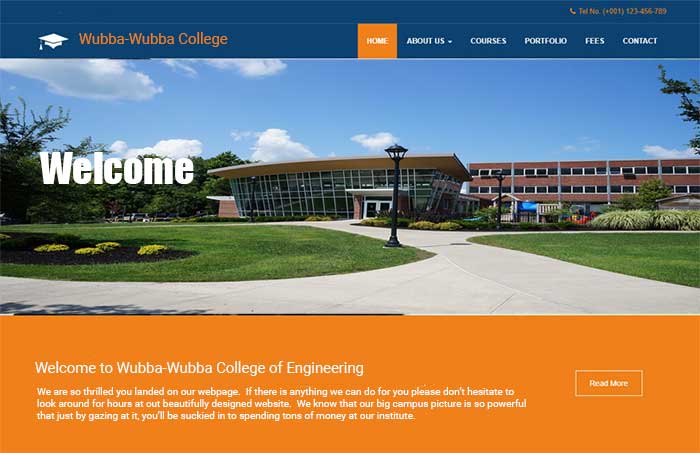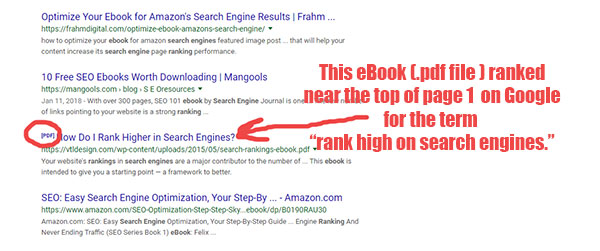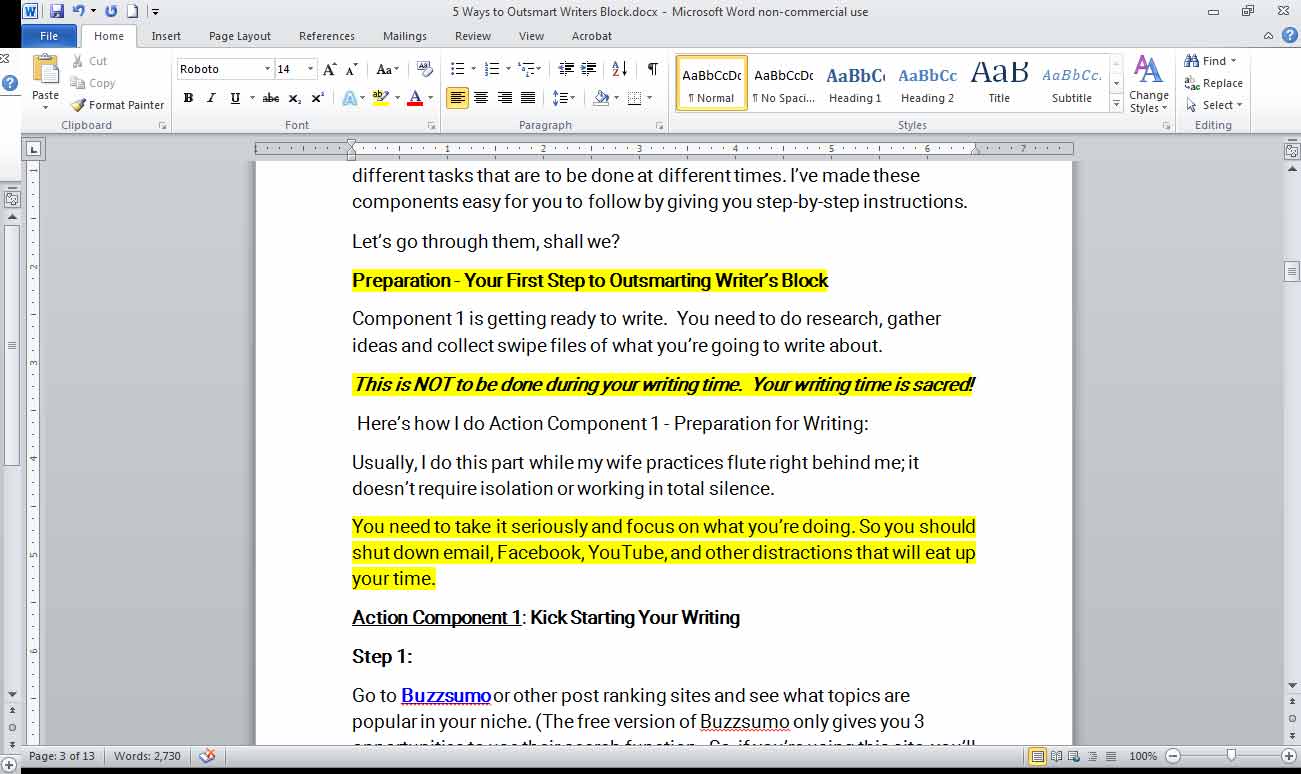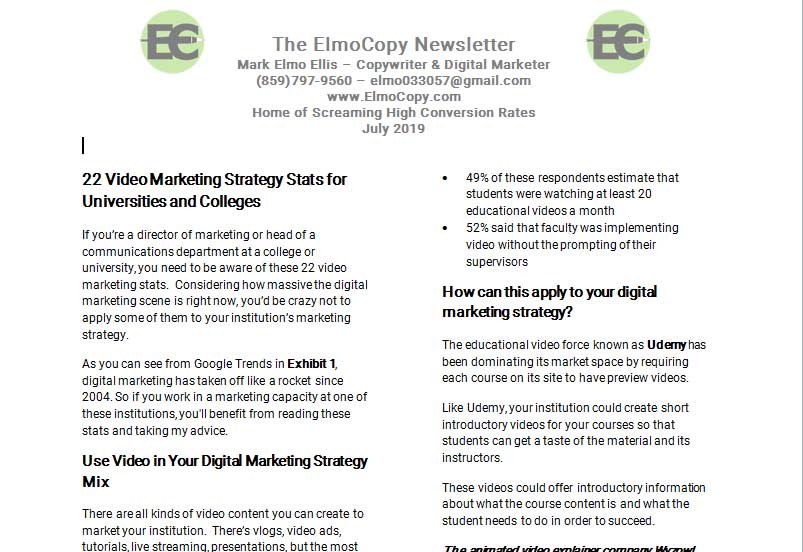As a college recruitment professional, do you feel like it gets harder every year to recruit students to your college or university?
Well, don’t be surprised, because you’re not imagining things.
The Boston Globe found that 20% of the 118 four year colleges in New England have seen their enrollment drop by 10% in the past 20 years.
Despite this type of trend, Market Watch shows that different markets are reflecting different stats for colleges and universities. For example, the number of high school students taking online classes has increased considerably.
Don’t get too comfortable, whenever there’s a good market, more competition enters the game.
A Tragic College Recruitment Error
Usually, institutions of higher learning think when enrollments drop off it’s time to cut back on marketing.
However, that is a tragic mistake; the most important time to kick marketing into high gear for any type of business is when the market gets tougher. The economy may not be the problem it’s just that better competitors are probably be eating your lunch.
This doesn’t mean that your school has to invest megabucks in its marketing. (Although, outspending your competitors on marketing is a good idea.)
In this post, I’m going to hand you 7 cheap ways of digitally boosting your marketing content that your institute of higher learning can use to still bring students through your hallowed doors.
I won’t lie to you, even though they are a cheap and easy way to get more eyes on what your school has to offer, they do take some time to implement.
Once you get past the learning curve on how to create them, the process will move much quicker, I promise.
Content Marketing Can Be Cheap – Make the Most of It
Straight up, online content marketing is clearly a winner when it comes to marketing that’s cheap yet powerful.
When you think about it, students are not going to start looking across a vast universe of colleges and universities to go to. Usually, the process looks something like this:

Unlike most sales funnels, the marketing is not targeted toward the people that will be paying for the service. In the case of higher education, the marketing is targeting the person that will use the service.
Usually, a student will have a few schools and disciplines in mind before they start looking. So thinking that prospective students are going to do an organic search for a school they want to go to is fool-hardy.
My point is, you’ll probably get a very interested student who is already familiar with your school when they land on your site. All you really need to do is fire up the desires they already have about possibly attending your school.
So, having said that, you don’t want a website that has this kind of information on the front page:

As you can see, there are no real benefits to this school.
(Of course, I just made a mock site for this example. However, you can’t imagine how many colleges and universities I’ve seen with weak landing page copy. It can kill a student’s interest in a matter of seconds.)
The institutes of higher learning that really get it, will lead with their biggest benefits right from the get-go.
Your Content Marketing Must Hit These Hot-Buttons
The challenge for you is if your school’s promotional materials don’t hit the prospective student’s hot buttons very quickly, you’ll lose them. Having a fancy picture on your landing page with words that haven’t been tested, is a recipe for failure.
And the same can be said for all of your promotional materials.
The content, especially the headline, will grab their attention faster than anything else. So you need to make sure that the first words they see are spot on.
Based on Eduventures’ Survey of Admitted Students, more than 70% of the students they surveyed said that their choice of a university or college boiled down to 6 factors.
They were:
- Affordability
- Availability of the desired program
- The reputation of the school and academic quality
- Career outcomes and job opportunities for graduates
- Value of education for the cost of attending
- Whether the school was a fit for them personally
Also, the location of the school in proximity to their hometown was an important factor that other surveys turned up.
As a copywriter, when I’m presented with a survey of this nature my attention level gets elevated very quickly. I know that I can extract a great headline based on one of these 6 factors.
(Of course, I would do a ton of research on the front end of a writing project especially when the stakes are on the front page of a school’s website.) Not only can I use the most powerful of these ideas, but I can also use the rest of them to base more of my content on.
If you have a big enough staff to work with, chances are you can delegate out a lot of this work to other members of your staff. However, many colleges and universities are often swamped with work, so putting out consistent content is taxing on departments.
You Can Always Hire Out the Work
One way of getting content written is to hire a freelance writer who knows what they are doing.
I know what you’re thinking. You’re thinking the cost of hiring a professional to do the writing won’t be worth it. After all, you can always tell one of your staff to do it when they get the time.
Book a Free 20 Minute Consultation with Me Now
The problem with that scenario is getting high-quality content written that converts scoffers into buyers. Getting Jim-Bob to churn out a quick blog post before he goes home can be content; it just won’t be high-converting content.
If the words on your website pages and promotional materials are written well, they can convert for years to come. When you consider how many prospective students are coming to your site those well-written words are worth millions of dollars for your school!
Wouldn’t it make sense to hire a pro who can produce compelling content to get prospective students to take the next step?
Also, if you have a professional who’s knocking out your content, the amount of time you’ll save will be considerable. This will give both you and your staff more time to focus on tasks that are high-priority.
Repurposing Content – An Overlooked Content Producing Trick
You can easily repurpose content into a different format for your marketing. Here are a few ways you can recycle your content while pulling in more traffic and getting more exposure for your school:
#1 eBooks
Yep, these are still handed out like cotton candy but you can use them on the web to get more exposure from different search engines. Just to give you an example, take a look at this:

So, how do you turn previously written content into an ebook?
First, you should look at the analytics of your site and see what information has been getting the most traffic. If you’re using a sophisticated website tracking site like Google Analytics, you’ll also be able to see how long people are staying on those pages as well.
Once you find a piece of content that has a lot of traffic and a low bounce rate, you should convert that page into an eBook. It’s very simple to do, all you have to do after you’ve formatted the content is save it as a .pdf file.
#2 Videos
Video marketing is hot in the content marketing realm and you can easily take previously written content and turn it into a narration or script for a video to be shared on YouTube. You can easily create great instructional videos with Camtasia, or whiteboard videos using software by Doodly.
#3 Podcasts
You can also use previously written content as a basis for a podcast. If you have some longer posts or articles, you can turn them into a series of podcasts.
An easy way to make this sound natural is to take your previously written material and highlight the most important parts of it, like so: 
Once you’ve highlighted these points in Microsoft Word you can use them as talking points.
If you want to have a really interesting podcast, invite a guest onto your podcast and then give them a copy of your post or article in advance. You can then have them comment, or add more information on these points.
Extra tip on this: Once you’ve completed your podcast, you can get your broadcast transcribed and post it as more content onto your website or blog. This will give you even more new material you can post.
#4 Social Media Content
You can use snippets of your content on different social media sites.
All you have to do is copy and paste a sentence or two into a site like Twitter and turn it into a post. On sites like Facebook or LinkedIn, you can use a paragraph or two.
If you have a WordPress blog you can use plugins like “Click to Tweet” which encourages other people that visit your post to share snippets of your writing. It literally takes seconds to copy and paste a sentence or two into the plugin.
Once someone comes to your site, if they click on the words, they can automatically share these words on Twitter.
#5 Graphics and Infographics
Speaking of social media sites, you can also turn pieces of your post into small graphics and infographics for Pinterest. You can also take the data you gather for your articles and blog posts and turn them into infographics as well.
How can you make great infographics for your own content? Here are two free resources that I use to create great infographics on the fly. One of them is called Canva and the other is Venngage. Both of these sites have free sections and a pay section.

The reason I like to use both sites is that they both have different flavors of graphics. I use Venngage when I want to use simple clipart style graphics to get a point across and I use Canva when I want to make graphics with photographs.
However, it’s all a matter of preference and how it will reflect your institute’s brand. The beauty of using graphics to get attention like this is it so easy to do and it can be very effective in getting people to notice your school. People respond to graphic messages much better than a webpage full of words.
Here’s a testimonial from a Harvard student that was repurposed into a simple graphic to promote their school on social media channels:

#6 Convert Content Into Newsletters
You can use repurposed content as articles for your email subscribers as well as a physical newsletter you send in the mail. The time spent on reformatting your previously written articles is minimal compared to the time you’ll save having to write more articles or posts.
Here’s an example of content I repurposed into a newsletter sent out to prospective clients. ( You can click to download the entire document):
If you have material that’s similar in nature, you can include several articles in your newsletter that are running on the same track.
Also, you’ll probably want to spend a little time updating your content if it is dated, adding new graphics or ideas that are more current.
#7 Use a Long Piece of Content as a Series
A great way to get a lot of traction with your content is to take an extra-long blog post or article and turn it into a series of videos, posts for other sites like Medium or LinkedIn.
#8 Turn Your Content into a Slideshare Presentation
If you already have a LinkedIn account, you can easily upload your content as a slide share presentation. In case you don’t know what Slideshare does, it will take your slide presentations, pdf,
Conclusion
You have so many options in your arsenal for content marketing it’s unbelievable. As I mentioned above, a lot of them are dirt cheap and the content can be used over and over again.
One last tip: You can also repurpose your old content by merely updating it. Just take one of your older posts and go back through it. Think of all of the different ways you could improve it and then make it better.
Once you’ve done that, you can use a bunch of the tactics outlined in this post to repurpose the content you just updated.
If you’ve found this post to be helpful, please leave a comment below in the comment area; it would really make my day.


